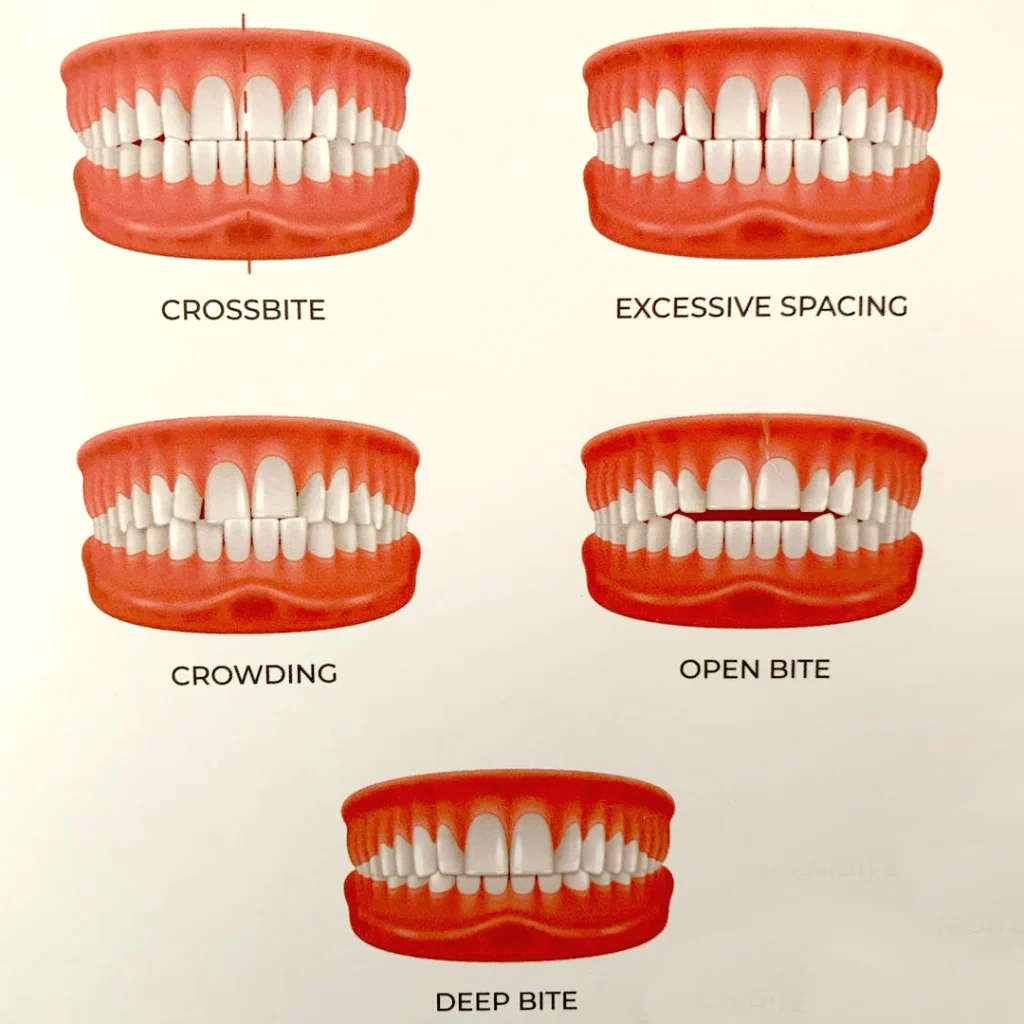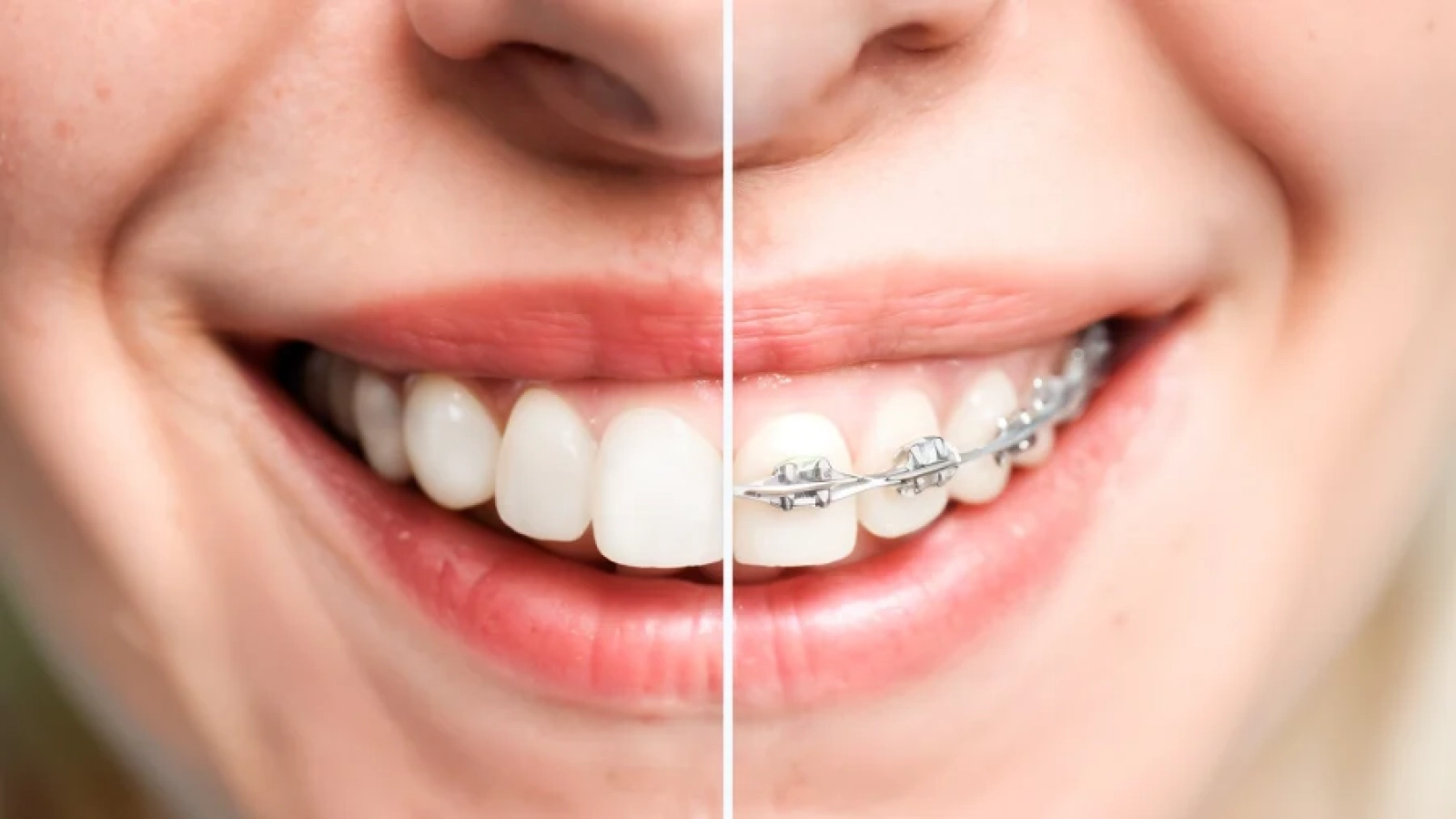Do you want to get your teeth straightened without having the wires on your teeth? Before I go into the details, I want to tell you about a patient named AB. AB wanted to get her teeth straightened and after providing different treatment options, the patient went ahead with normal braces. After she had it put on, the patient reported back after a week saying she wanted to remove it and go for a more comfortable alternative. She just could not bear the poking wire and irritation caused due to the braces. She then opted for clear aligners, which is a more comfortable and aesthetic alternative.
I am not trying to say that normal braces are harmful or irritating but I am just highlighting the fact that there are patients who cannot tolerate the initial discomfort of normal braces and there are others who want a more transparent (aesthetic) option. For these reasons, Clear Aligners are the best option.
Orthodontic therapy is the type of dental therapy done to straighten teeth. Normal braces are the conventional type braces with brackets (attachments) bonded to each tooth and wires are placed. At the same time Clear Aligners are removable plastic trays that are customized for each patient.
Many patients or friends regularly ask me which type of orthodontic therapy they should go for. This blog will help my readers compare the two options and decide what is right for them.
What Are Clear Aligners?
Clear Aligners are removable thermoplastic customized trays to correct your teeth alignment. They come under different lab names like Invisalign, Flash Aligners, Clear Correct, etc.
The treatment process includes
- Diagnosis: A proper diagnosis of the tooth problem is the most important factor before going ahead with your treatment. An orthodontist is the specialist who can help you with which appliance best works for you. Radiographs and photographs will have to be taken to confirm your treatment plan.
- Impressions or 3D scans: Teeth impression or 3D scan is taken to record your teeth condition.
- Treatment planning: Different treatment plans are made to discuss with the patient.
- Manufacturing and delivery of Aligners: The concerned lab will start manufacturing your aligners once the treatment plan is finalised.
- Aligner fitting: When the aligners have arrived, it is tried on the patient to check its fitting.
- Treatment: Then the treatment starts under the guidance of your Orthodontist.
During the treatment, each set of aligners ( upper and lower ) are worn for approximately 10 days and 22 hours per day.
If you ask me “Can you eat with the aligners on?”, it is a NO.
There are 2 reasons :
- you cannot chew with your aligners and it can fracture or crack if you bite on something hard.
- Food can get stuck on the aligner, you will find it difficult to clean it. So it is ideal to remove them before every meal and wear them immediately after your meals. Moreover, it will never affect your wear timings as you have to wear them 22 hours only.
Are aligners painful? While wearing your aligners, each new set will tend to cause tooth soreness as your teeth are moving but it will be only for a day or two.
What are the benefits of clear aligners?
- Aesthetics: Virtually invisible.
- Comfort: Generally more comfortable and less painful than traditional braces
- Removability: Eat and drink whatever you want, easier to clean your teeth.
- Convenience: Fewer in-office visits. It is always good to visit your orthodontist every month to know if the treatment is on track. But due to location limitations or work-related travel, you can do a check-up in 2-3 months as long as you wear them properly as advised. I want to highlight this because many times patients (especially those who cannot consult the doctor on a regular basis) feel that wearing it will help in achieving the perfect result. This is not entirely true because there are occasions where the aligners fitting may not be proper and the patient will not be aware of the same and they keep progressing to the next aligners but the tooth will not move as planned. So it is imperative to do regular check ups with your orthodontist or an orthodontist assigned at a different location under the advice of your orthodontist.
What Are Traditional Braces?
Traditional braces known as Dental braces in general have been in practice for a long time now. As time advanced, there were many advances in orthodontic materials. It basically has brackets bonded to your teeth and wires are placed for the tooth movement. The treatment process includes:
- Diagnosis & Treatment Planning: Similar to clear aligner therapy, the Orthodontist must examine and may have to take models, radiographs, and photographs to confirm your treatment plan.
- Treatment: The treatment starts when the Orthodontist places your fixed braces on your teeth
- Appointment and follow ups: Monthly appointments are a must for traditional braces. If the patient does not properly follow the appointment, there will be a delay in treatment and it can get prolonged.
Benefits of traditional braces:
- Effectiveness: Traditional braces are still more effective in treating complex orthodontic cases as of date. When compared with normal braces, Clear Aligner are not so effective but can treat certain complex cases due to advances in research and development.
- Cost: It is more affordable than Clear Aligners.
- Treatment time: Treatment duration usually depends on many factors such as teeth condition, severity of the teeth malalignment, age, etc. Depending on the said factors, treatment duration ranges from 6 months to 2 years.
How to decide between Clear Aligners or Traditional Braces?
Always remember Clear aligners or traditional braces are just means to achieve the treatment aim or they are just tools for orthodontic therapy. Given below are the criteria to decide between the two.
- Comfort: Aligners are far more comfortable compared to traditional braces.
- Food diet: Traditional braces have limitations in diet. You cannot eat a hard diet as it can lead to breakages of the components of the braces. Even sticky food can be difficult to clean. Such issues will not occur with clear aligners as they are to be removed before meals.
- Aesthetics: Clear Aligners are the most Aesthetic or Transparent orthodontic appliance till date.
- Time bound: If you are time bound in completing your treatment, Clear aligner will be a better option as the treatment plan can exactly predict the treatment duration.
- Non Resident patient: Clear aligners only require checkup in 2-3 months. So if you are a non resident, clear aligner is the right choice.
- Non compliance: If you feel you will not wear the aligners as per schedule or cannot be compliant with the treatment protocol, it is better to go ahead with normal fixed braces.
- Age: As you age, patients tend to seek aesthetic appliances. So Clear aligners or Ceramic braces are good options.
Dental problems that Clear aligners can treat
Aligners can treat the following cases
- Teeth spacing
- Crossbite
- Open bite
- Crowding
- Deep bite.
- Proclined teeth with the extraction of teeth.
Certain complex cases can also be treated by Clear aligner but always Normal braces stand in the forefront for such cases. It would be better to consult your Orthodontist to know if your teeth can be corrected by Clear Aligner.

Clear Aligners vs Traditional Braces
|
Braces |
Clear Aligners |
|
|
Treatment Length |
6 months to 2 years ( depending case to case) |
When compared to normal braces, Clear aligners are more time bound making treatment duration shorter for the same treatment. |
|
Estimated Price Range |
Rs 30,000 – 1,50,000/- |
Rs 60,000 – 3,50,000/- |
|
Removable |
Fixed |
Removable |
|
Maintenance |
Difficult to clean and maintain |
Easy to clean and maintain |
|
Gum irritation |
Chances of gum irritation is higher if oral hygiene is not maintained |
Chances of gum irritation are almost nil |
|
Food restrictions |
Hard and sticky foods are restricted |
No food restrictions |
After a thorough examination and diagnosis, the Orthodontist and patient must sit together and discuss the patient’s intent of treatment, doubts regarding treatment, aims and objectives of the treatment, and budget so that a tailor-made treatment plan and appliance can be planned for the patient. Whether it is Clear Aligner or Normal Braces, obtaining a positive and encouraging smile with ability for optimal teeth functioning must be the utmost aim.


